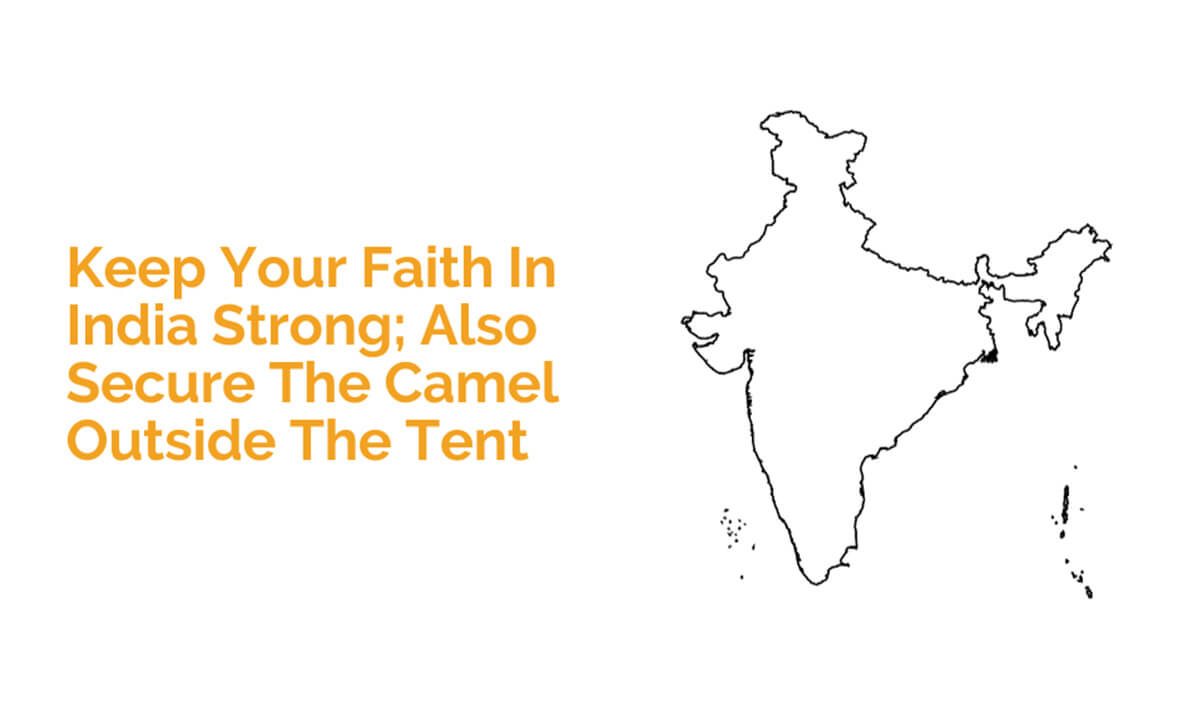Keep Your Faith In India Strong; Also Secure The Camel Outside The Tent
These are the best of times and the times to be cautious, too.
Yes, cautious, not pessimistic.
The Indian economy is expected to grow 7.3% in FY24, compared with 7.2% in FY23.
India’s manufacturing sector, which constitutes 17% of the country’s GDP, is seen growing at 6.5% this financial year compared with 1.3% last year.
The leading growth sectors are construction, showing a growth of 10.7%; financial, real estate and professional services at 8.9%; public administration and defence at 7%.
What has driven this growth?
Economic growth is fuelled by government spending and an infrastructure boom.
Look Under The Hood
This vibrant tapestry, however, masked a concerning trend – the engine of the Indian economy, consumer spending, appears to be sputtering.
High inflation, particularly impacting essential food items, was pinching the pockets of India's vast "bottom of the pyramid" demographic.
There are two kinds of India in terms of income bracket: people from the upper-income bracket and those in the lower-income bracket.
According to economists, the wages of people at the bottom end of the pyramid are not growing at the same pace as the people in the organised sector or people at the upper end.
A fall of one per cent in inflation can raise GDP by 65 bps or cause private consumption expenditure to rise a little over one percentage point, opine economists.
India’s Consumer Price Inflation rose to 5.5% in November, primarily led by food prices.
The Reserve Bank of India is committed to reining in inflation, and investors are expected to keep an eye on it.
Food inflation was at 8.7% in November, and the RBI, in its December bulletin, stated that real-time inflation is adversely impacting discretionary consumer spending.
Erratic rains have hit kharif output, weak soil moisture has hit the total acreage in rabi sowing, and the spectre of El Nino has cast a long shadow on agricultural prospects, with the government estimating agrarian growth at 1.8% in FY24, a seven-year low.
In perspective, agriculture grew 4% in FY23.
Food supply shocks, leading to higher food prices, can disproportionately impact low-income consumers.
Inflation is perhaps the biggest concern for the Indian economy, one that can trip the economic growth engine.
Higher interest rates to control inflation could deter investment expenditure due to higher cost of capital and an accompanying fall in demand, thereby causing economic growth to sputter.
Other Shadows
Beyond the domestic challenges, external storms threaten to disrupt India's economic journey.
The upcoming Lok Sabha elections introduce an element of uncertainty. While a BJP win might maintain continuity, a potential coalition government could bring policy shifts, impacting investor confidence and potentially delaying crucial economic reforms.
The political rhetoric in the run-up to the elections and the opposition parties promising a range of populist policies could lead to competitive electoral politics, causing investors to worry about its impact on the fiscal deficit.
Geopolitical turmoil, from the simmering Israel-Palestine conflict to the ongoing Russia-Ukraine war, poses the risk of inflated oil prices and disrupted supply chains. This can translate into fiscal instability and inflation woes for India, further squeezing disposable incomes and dampening consumer spending.
Even as the Russia-Ukraine war has been simmering on for a while, there is another threat that has merged from the ongoing Israel-Hamas war.
Houthi rebels based in Yemen have been attacking merchant ships transiting the Red Sea, causing many shipping companies to stay away from the Red Sea.
The Red Sea is the entry point for ships using the Suez Canal, accounting for over 12% of global trade and one-third of global container traffic.
The Houthis, siding with Hamas in its war with Israel, are going after merchant ships that have any ties to Tel Aviv, even if those connections sometimes look tenuous at best.
Shipping companies like Maersk and Cosco have pulled their ships out of the area, and others are circumnavigating the Cape of Good Hope, the southern tip of South Africa.
Rerouting through the Cape of Good Hope raises costs as the distance increases by 3,000-3,500 nautical miles or 6,000 km. Also, it adds another 10 days duration to the journey.
A wider war in the region, and one that could pull Iran because of their supposed backing of Houthi rebels, could result in a sharp spike in oil prices.
Implications for India
That will be bad for India's fiscal stability as the country relies mainly on imports for its energy needs.
A wider war will also create pressures on food supply. Higher oil and food prices might spike India's inflation, which now seems to be cooling down.
The RBI is expected to cut interest rates in the second half of the year mainly due to a lowering inflation. But a flared-up war might force its hand to hike rates. It had paused its rate-hike cycle in April last year. Higher rates will impede economic growth.
India faces the dual challenge of slowing consumer spending and unequal distribution of wealth.
Cautiously OptimisticAddressing inflation, particularly for essential goods, is crucial to reviving consumer confidence and restoring demand. Additionally, policy reforms should focus on boosting the incomes and purchasing power of low-income consumers, ensuring their participation in the growth story.
By navigating the political uncertainty, weathering geopolitical storms, prioritizing food security, and addressing inequality, India can steer its economic ship towards a more inclusive and resilient future.
The world is watching whether India's economic ballad will turn into a story of shared prosperity.
Investors can expect volatility across asset classes. It may be a good idea to consider partly booking profits and follow the asset allocation principle to mitigate risks.
We are sure you enjoyed reading this article.
If you are interested in investing and want to learn more about Bondbazaar, Sign up now to get started on your journey of common-sense investing. Trade bonds with the same ease that you do stocks.

